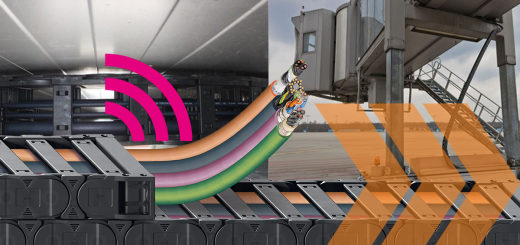How to properly secure bearings axially
By Lars Butenschon
In part one of this “How to properly secure bearings” series, the reasons as to why bearings move out of their mounting holes and what can be done to prevent it were covered. If press fit is not achieved, it can be done by changing bearing shape. Here, we will take a look at different ways of axial securing bearings.
Option 1: Axial securing with slit bearings and undercuts
With an open slit design, the bearing can compensate for a certain range of tolerance deviation from the housing bore. This design also allows for a double flanged shape. The two flanges allow for axial securing in both directions. With the slit design, the bearing can be compressed, allowing the second flange to be put through the mounting hole. Once put in, the bearing expands again so the second flange can keep the bearing from falling out of the housing. As one can imagine, this design also requires the bearing material to be flexible enough to withstand the installation process.
Option 2: Axial securing bearings with “snap-in” solutions
Snap features can help secure bearings axially. During assembly, the protruding undercut features are pressed together automatically. As soon as they pass the assembly hole, they snap back in place and keep the bearing from going back. The flange at the back end of the bearing further prevents the bearing from going in too far. The process is easy, reliable and fast, ideal for use in mass production. Learn more at http://www.igus.ca/info/plain-plastic-bearings
Option 3: Axial securing with flexible, double flange bearings
The use of flexible double flanged bearings is a more advanced way of axial securing and is mainly used in the automotive industry. These bearings offer a special flexible flange. Initially, the bearing only has a flange on one side. The opposite side consists of a number of radially-placed slits. After the bearing is pushed through the mounting hole, another pushing device applies pressure from the opposite side of the mounting hole. During this process, the slit features bend outwards, forming a flange. The bearing then sits tightly secured in the mounting hole. Learn more at www.igus.ca/info/plain-plastic-bearings
Option 4: Axial securing with screws – “bullet-proof”
If all else fails, a flange with holes for screws can be used. Users can simply put screws in after the assembly and the bearing will be secured. This is not practical for automated assembly, but it gets the job done.
Option 5: Gluing the part into the housing
Although it is not always the cheapest or fastest method for axially fixing the bearing, there is the option of using an industrial glue. Each bearing material will react differently to the glue, so it is important to contact the bearing supplier for suggestions. This process is especially useful when there may not be time or money for a custom shape or a new tool.
Virtually limitless design choices with plastic bearings
Self-lubricating plastics offer almost unlimited design potential. They can be molded or bent into almost any shape, and are easy to cut or machine. By using modern production technologies like 3D-printing, laser-sintering or injection-molding, it is easier than ever to make design ideas a reality. Metal bearings can be made in many different shapes, but the processes involved are often considerably more expensive, and their design is limited by the necessity of external lubrication.
Plastics, especially tribologically-optimized plastics (optimized for low wear and friction) offer a homogenous structure. They are comprised of a mixture of solid lubricants, fibers, filaments and base polymers. Therefore, every surface of a plastic bearing can serve as sliding area.
For securing bearings, anti-rotational features are also important. To learn more, read part three of this series.



